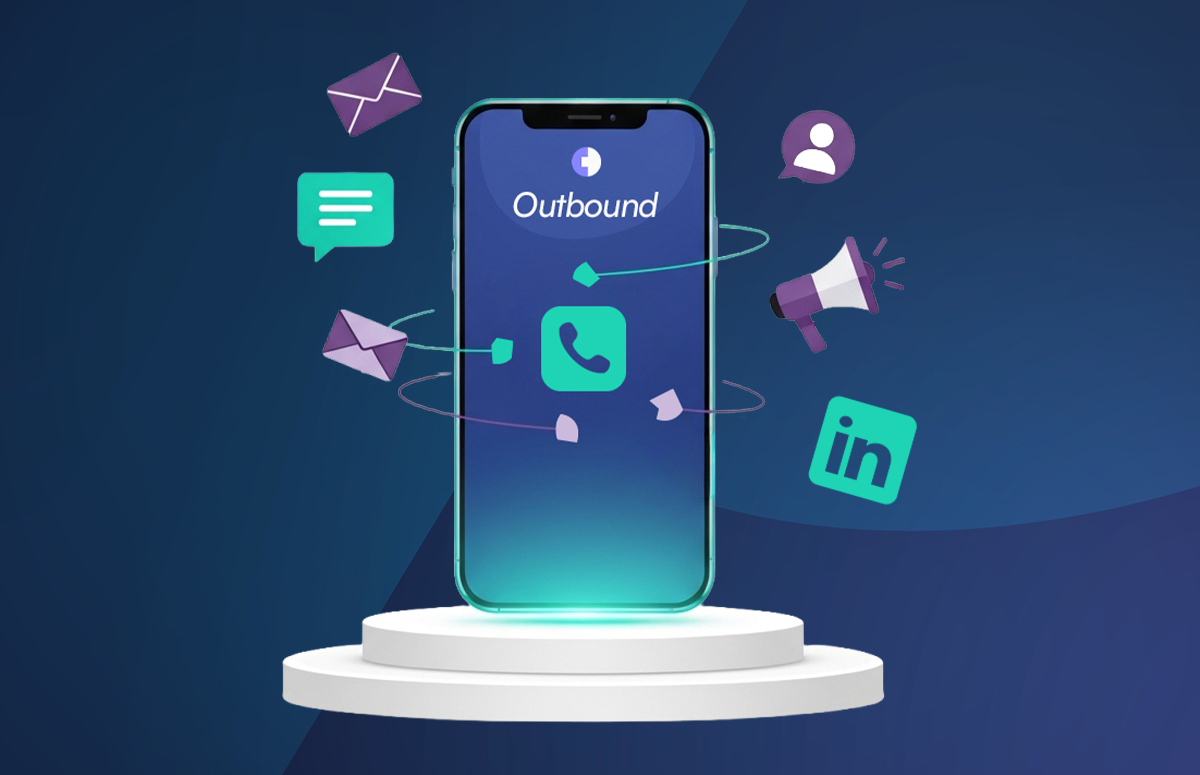9 Strategies for Improving Sales Performance
Sales teams are under more pressure than ever.
Buyers are smarter, sales cycles are longer, and simply “hitting quota” is the least of your team’s performance worries.
If you want to drive consistent, scalable revenue, you need a solid sales performance improvement plan.
We spoke with Jeff Lichtenstein, CEO and Broker at Echo Fine Properties, to unpack what successful sales performance means and how to achieve it.
Let’s jump in. 👇
What is sales performance?
Sales performance measures how effectively your team recognises and turns an opportunity into sales revenue.
Jeff explained it like this:
“It measures whatever sales goal the team is attempting to achieve at a particular moment.”
For team-wide goals, that might be a group effort to increase the number of qualified leads, shorten the sales cycle, or add $10k in revenue to the monthly tally.
Sales performance isn’t a measure of who hits quota, though. It represents the various meaningful efforts that align to make a sale happen.
It’s helpful to track things like:
- Sales activities that help qualify meaningful leads.
- Individual sales rep behaviours, like consistent follow-up or outreach.
- Outcomes that drive growth.
Jeff also mentioned that tracking sales performance individually is smart, especially for new reps who are just getting their feet wet. It takes an average of three months for a new rep to be fully productive.
He said:
“The first six months of sales performance of a new sales representative might be just grasping the material and making outreach calls.”
So, for those reps, adjusting what’s measured can be a better indicator of their success rather than expecting them to start closing deals within their first few weeks on the job.
How do you measure sales performance?
How can sales managers keep track of their team’s performance?
Monitor the following sales performance metrics:
- Win rate.
- Quota attainment.
- Sales cycle length.
- Lead response time.
- Customer acquisition cost (CAC).
- Revenue generated per rep.
Tracking these things in sync can give a clearer picture of your sales success.
It can also help identify areas of improvement or optimisation that your team can work on individually or as a team-wide initiative.
When asked how he measures sales performance, Jeff emphasised the importance of sales processes, helping each other out, and using sales tools with data analytics capacity.
He said:
“I measure sales performance in terms of sales training, using a CRM to keep up with data, follow-up activity, and even helping others in an office setting because that adds value to the overall company.”
It’s smart to use sales tools to help track performance. They come with dashboards that track KPIs in real time, giving you the green light to tweak your sales strategies and correct course, if needed.
What does good sales performance look like?
Tracking performance isn’t about finding which sales rep to put on the chopping block.
Instead, it’s about identifying which reps may need more training, better tools, or more feedback. Because when one rep wins, the entire team benefits.
But before you identify poor performance, it’s helpful to understand what constitutes good performance.
At a glance, a strong sales performance means:
- Balanced pipelines.
- Consistent quota attainment.
- Low turnover.
- Solid sales team productivity.
Jeff said:
“Even then, though, if someone gets less assertive over time in sales and takes their foot off the pedal, they may have great sales performance in terms of numbers in the short term, but could be doing damage to their long-term sales performance.”
That is why it’s important to look at sales performance as a whole, not just a piece.
One good month - or quarter - doesn’t necessarily translate to continued revenue generation, especially if a rep lacks the skills to keep the wins coming.
It’s important to note that “good” is relative. What counts as a strong sales performance varies by price point, industry, product, experience, and your company’s maturity.
What factors can affect sales team performance?
It’s helpful to think of sales performance as a collection of team members and processes working together.
But what happens when the system is clogged?
Sales performance tanks.
Many external factors affect sales performance. Keep an eye on:
- Market saturation: Is there too much competition?
- Buyer behaviour shifts: Sometimes, the problem lies with the customer, not your reps’ skills or abilities. On average, 11 people in an organisation are involved in a purchase decision. If even one or two of the people aren’t ready to purchase, a sale is a no-go.
- Economic conditions: Volatile market conditions affect how and when leads buy. If the market is unstable, your numbers will likely reflect it.
However, more often than not, internal factors have a greater impact. Here’s what to watch out for:
- Poor onboarding: if your reps aren’t fully trained, they can’t do their job well.
- Lack of clear goals: SMART goals, or specific goals with a time limit, help align expectations and provide clarity for your team.
- Outdated tech: A solid sales tech stack is the secret to closing more deals. If yours is clunky or out-of-date, it’ll slow your team down - or worse, cause them to lose out on a signed contract.
- Misaligned marketing and sales: When your marketing and sales teams aren’t in alignment, your leads become confused. Confusion never lends well to a closed deal and can damage your reputation.
- Company culture: A hostile atmosphere in your department can have a big impact on sales performance.
And sometimes, it’s not about systems or markets that can lead to poor sales performance. Sometimes, it’s simply a mindset.
Jeff said:
“Emotion can have the biggest effect on sales performance, and specifically rejection. People who get over rejection and let negative things slide easily usually have better sales performance.”
In other words, even the most comprehensive sales playbook won’t save a mentally checked-out or emotionally burned-out rep.
Building emotional resilience is just as critical as refining your sales motion.
What are the best sales improvement strategies?
Take a look at your key metrics. Do you see any areas for sales improvement?
If so, here are nine strategies for improving your sales performance. 👇
1. Improve your sales data
Sales expert Jeb Blount once said:
“Never forget that the number one reason for failure in sales is an empty pipeline.”
It’s a huge challenge for sales teams. And it all stems from the data a team uses.
When a team has bad data, reps spend hours chasing low-potential leads, navigating disconnected data sources, and guessing who to contact next.
The result? Burned time, stalled pipeline, and lost deals.
Cognism’s Sales Companion was built to fix that.
It’s not just a tool; it’s a personalised sales assistant that streamlines outreach with intelligent insights and high-quality, actionable data.
Here’s why sales managers love it:
- Pinpoint decision-makers faster: Access Diamond Data®: phone-verified contacts with unmatched accuracy.
- Smarter prospecting, less guesswork: Get real-time buyer signals like funding rounds and intent triggers.
- Customised rep experiences: Tailor searches to personas and territories for laser-focused outreach.
- Integrated for speed: Sync effortlessly with CRMs and sales tools to avoid manual work and save time.
- Multi-thread your deals: Get guided recommendations to connect with entire buying committees.
- Built for compliance: Stay GDPR and CCPA safe, with cross-referenced global DNC checks.
Sounds too good to be true? See for yourself with this interactive product tour 👇
2. Create a consistent coaching schedule
Quarterly reviews are great, but they leave sales reps waiting in the wings for months before receiving feedback on their performance.
If you want to support your reps and help them improve their skills, coach them.
Jeff suggested role-playing as a training technique.
He said:
“I do a lot of role-playing where I let the salesperson in a real-world setting sell me on the product... then we go vice versa.”
“Role-playing and talking about it afterwards is the best sales improvement mechanism I have found.”
You might also consider implementing:
- Call analysis training.
- Real-time feedback during a sales call.
- Call scripts to use as a cheat sheet.
3. Align sales and marketing
When your sales and marketing teams are out of sync, it can feel like your entire organisation is spinning in place.
Misalignment can lead to missed opportunities, finger-pointing, and wasted spending.
But when these two teams are aligned, your business will start to attract high-quality leads and build a smoother buyer experience.
How best to align them? Follow these steps:
- Define a shared ICP and buyer journey: Agree on your ideal customer profile and buyer personas. Identify what qualifies as a high-intent B2B buyer across the funnel.
- Build unified lead scoring and routing rules: Ensure both teams use the same criteria to score, prioritise, and hand off leads, avoiding drop-offs and misalignment.
- Set joint pipeline and revenue goals: To create accountability and collaboration, tie both teams to shared KPIs (e.g., MQL to SQL conversion, pipeline value).
- Hold regular syncs and feedback loops: Schedule bi-weekly meetings to review lead quality, campaign performance, and pipeline progress. Act on shared insights.
4. Set SMART goals
Setting SMART goals is an easy strategy for sales improvement.
SMART goals are Specific, Measurable, Attainable, Relevant, and Time-bound.
For example, the goal might be:
“Increase qualified outbound leads by 20% over the next 90 days by using intent data to prioritise outreach and booking weekly alignment sessions with marketing.”
This example outlines what the team plans to accomplish, how they’ll do it, and when.
Pro tip:
Avoid vanity metrics; instead, reward the behaviours that build a healthy sales pipeline.
5. Prioritise high-intent leads
High-intent leads are potential customers who are showing signs of making a purchase. These leads have money in their pockets and are looking for the solutions your organisation offers.
Having a rep follow up or nudge them at the right time can mean the difference between a closed deal and a lost one.
Keep an eye on high-intent behaviour like:
- Visiting your pricing or product pages multiple times.
- Filling out demo or contact forms.
- Engaging with competitor comparisons.
- Responding to outbound emails or LinkedIn outreach.
- Downloading late-funnel content (like case studies or RFP templates).
⚠️ Cognism’s intent data helps you zero in on high-intent leads faster, so your team can prioritise the ones most likely to convert. Book a demo to find out more.
6. Nail your onboarding
One of the best strategies for sales improvement is providing new sales reps with a roadmap for success.
This means creating a solid onboarding program that gives them access to mentorships, team playbooks, sales enablement tools, and 30-, 60-, and 90-day performance plans.
According to a Salesforce report, the number one growth tactic for sales leaders is improving sales enablement and training. When your reps are given the tools to succeed from day one, your team benefits from improved sales performance.
7. Create a culture of accountability
Accountability doesn’t mean breathing down your reps’ necks and applying unnecessary pressure.
Instead, create a team environment where reps can take ownership of workflows, pipelines, and department goals.
The best-performing sales teams log their activity, identify risks, and are comfortable asking for help when they need it.
Here’s how to build that kind of culture:
- Set clear expectations: Everyone should know what “good” looks like and how it’s measured.
- Share performance metrics transparently: Use dashboards to show how the team is tracking.
- Celebrate effort: Reward the behaviours that lead to results, even if the deal doesn’t close.
- Coach regularly: Accountability without support becomes fear. Keep one-on-ones frequent, honest, and action-oriented.
Accountability is a tool. When used right, it turns a group of individuals into a high-performing team that owns its numbers and backs each other up.
9. Celebrate wins and share what’s working
There are highs and lows in sales. As Jeff pointed out, it’s tough to hear no’s repeatedly, especially when the yeses are few and far between.
Instead of waiting for your reps to close a deal, celebrate the efforts they take daily to support the overall sales performance goals.
Celebrating success is a great sales performance improvement strategy and boosts morale.
Pro tip:
Wins are only helpful if the rest of the team can learn from them. Make it a point to share what’s working, so others can replicate the success.
How does Cognism improve sales?
There you have it - the ultimate guide to sales improvement.
Key takeaways for sales managers:
- Know what a successful sales team looks like and how you’ll track its performance.
- Identify what’s holding your team back and implement strategies to remove blockers and improve poor performance.
- Implement the right tools, coaching, alignment, and culture to support your reps.
Finally, try Cognism’s Sales Companion! It’s your team’s +1 for smarter prospecting - get phone-verified data, real-time signals, and personalised recommendations 👇


